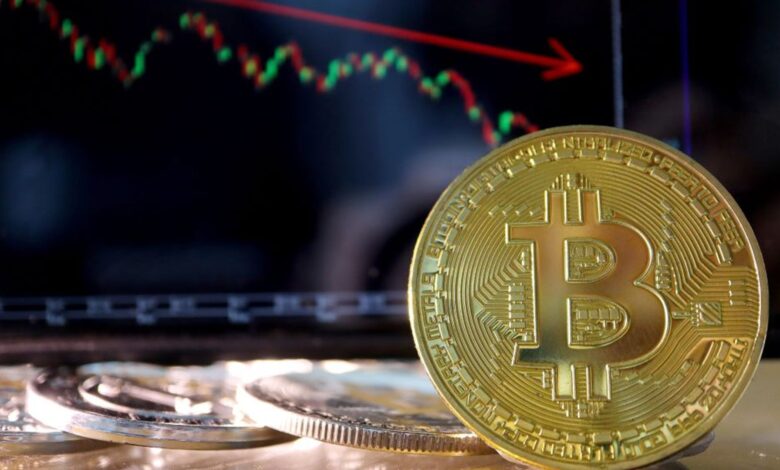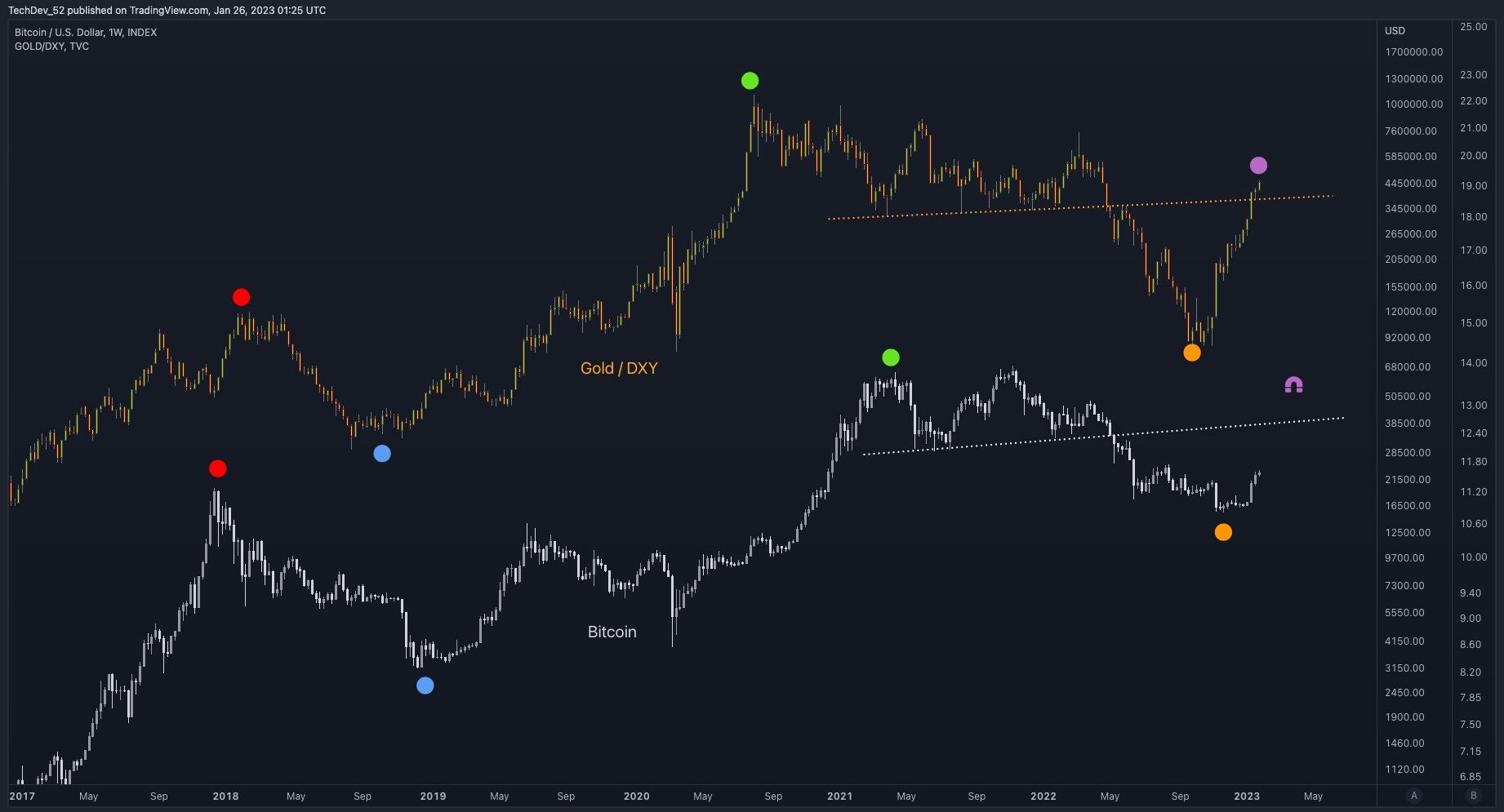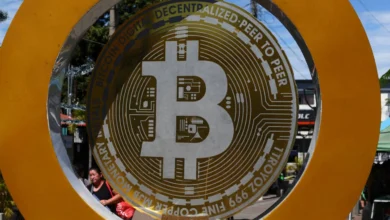
Bitcoin Price Struggles Despite Declining US Dollar
Bitcoin Price Struggles The most prominent cryptocurrency in the world, Bitcoin (BTC), has dropped significantly in price by around 12% since March 2, 2025. Notwithstanding this decline, a possible comeback driven by a declining US Dollar Index (DXY), which gauges the dollar’s value against a basket of key currencies, has not occurred.
Although historically, a decline in the DXY has been seen as a sign of Bitcoin’s price going parabolic, this time, the cryptocurrency is not behaving as expected. Why would one find this paradox?
Bitcoin and DXY
Looking at historical market cycles helps one to grasp the link between Bitcoin’s market and the DXY. Traditionally, Bitcoin performs better when the DXY weakens since the coin shows increasing price swings. This makes sense based on investor behavior: as the dollar’s value falls, people search for other stores of wealth, such as gold and Bitcoin, which might function as hedges against inflation and currency devaluation.

Historically, Bitcoin has shown a relationship opposite to that of DXY. Not coincidental with significant DXY declines were major Bitcoin rallies in 2015, early 2020, and late 2022. This inverse relationship has led to the presumption that Bitcoin will attract more investment when the DXY declines, increasing its price.
Bitcoin’s Response to Dollar
Although the price of Bitcoin has always been sensitive to fluctuations in the DXY, the present market environment is characterized by both short-term and long-term elements that might be affecting its behavior. These main elements could help to explain why Bitcoin is not reacting to the declining dollar as it has in earlier times:
Geopolitical and Economic Uncertainty
Geopolitical concerns and global economic instability have been rising in recent months. Trade conflicts, particularly between big countries, have produced an erratic environment in financial markets. Investors are growing more wary, and many are seeking protection in more steady assets—such as US government bonds and classic gold—rather than riskier assets like Bitcoin.
Concerns about inflation, interest rates, and oil costs, among other geopolitical events, are generating a volatile environment that might make investors more risk-averse, affecting Bitcoin’s capacity to rally.
Monetary Policies Impact
The US Federal Reserve and other central banks worldwide have changed their monetary policies to fight growing inflation. These developments have changed borrowing rates and occasionally resulted in tightening liquidity in world markets. However, a lower dollar and more liberal monetary policies have historically helped Bitcoin.
The market might still be adjusting to these policy shifts. Investors typically cut their exposure to speculative assets like crypto prices in tighter financial conditions, lowering price demand.
Bitcoin Market Speculation
The Bitcoin market is specifically subject to speculation. When Bitcoin achieves notable price benchmarks, it usually sets off profit-taking by investors seeking to lock in gains. Even if more general market trends, such as a declining dollar, would suggest otherwise, this tendency can cause significant drops in the price of Bitcoin.
The latest decline in Bitcoin’s price could just be the outcome of such market behavior, in which short-term traders profit from price swings even in the presence of better macroeconomic conditions.
Bitcoin’s Evolving Market
The market for Bitcoin has developed somewhat differently recently. Rather than only reacting to changes in the dollar, Bitcoin’s price swings have been more strongly linked to more general macroeconomic variables such as inflation rates, interest rates, and stock market performance as more institutional investors enter the field. Initially dominated by retail investors, the cryptocurrency industry now includes hedge funds, institutional players, and big companies who might exercise more cautious Bitcoin investment given market volatility.
This maturing market might indicate that Bitcoin responds more to other economic cues and is less reactive to transient DXY swings.
Impact of a Declining Dollar on Bitcoin’s Price
Notably, the impact of a declining dollar on Bitcoin would not be instantaneous. Bitcoin’s price often lags behind changes in the dollar’s value, as Julien Bittel, head of macro analysis at Global Macro Investor, notes; occasionally, it takes months or even years to represent the dollar’s decline. This slow reaction might help to explain why, given a declining DXY, Bitcoin has not yet skyrocketed.

Given the dollar’s declining trajectory, Bitcoin’s price is likely to continue under increasing pressure in the coming months.
Bitcoin’s Future
Many observers remain hopeful about Bitcoin’s future despite its stagnant price. For long-term investors, some see a purchasing chance presented by the recent price adjustment. Renowned Bitcoin expert Lark Davis contends that a declining andar and growing global liquidity has finally triggered the next significant Bitcoin surge.
Conversely, there are voices like Ki Young Ju, CEO of CryptoQuant, who have advised that Bitcoin’s market cycle might have changed. Ju claims that on-chain data point to a possible end of Bitcoin’s upward period and a more bearish or sideways market phase.
Final thoughts
Ultimately, the complicated problem with several contributing elements is Bitcoin’s inability to go parabolic even with a declining US Dollar Index. Although past patterns have indicated an inverse relationship between the DXY and Bitcoin, changes in monetary policy, global economic uncertainty, and a maturing market all help to form the present market environment. Speculation trading activity also influences this process. Consequently, Bitcoin’s price swings are no longer exclusively dependent on changes in the dollar.
When evaluating Bitcoin’s future development, investors must consider a wider range of elements, including geopolitical concerns, central bank policies, and market attitude.







